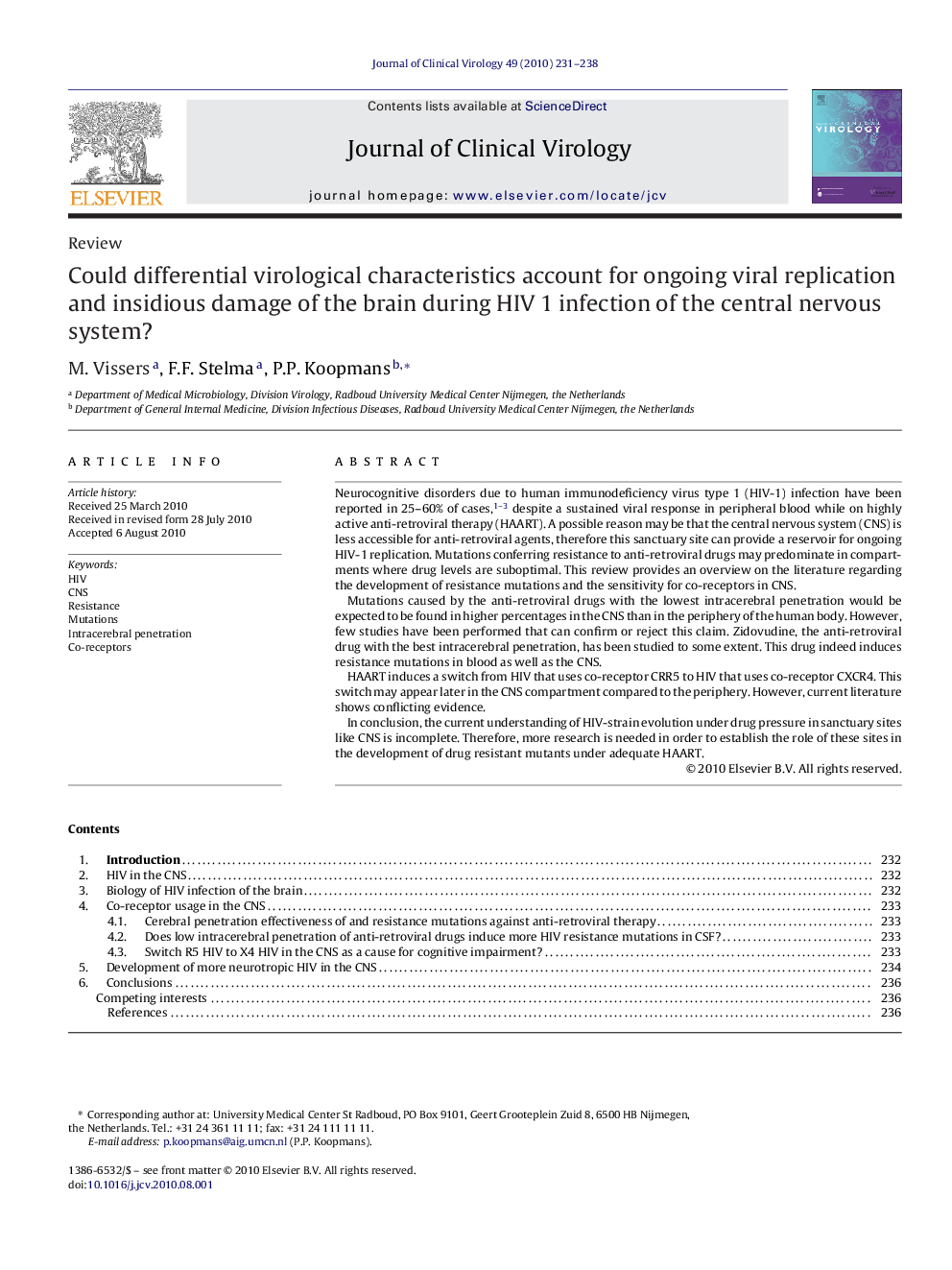| Article ID | Journal | Published Year | Pages | File Type |
|---|---|---|---|---|
| 3369384 | Journal of Clinical Virology | 2010 | 8 Pages |
Neurocognitive disorders due to human immunodeficiency virus type 1 (HIV-1) infection have been reported in 25–60% of cases,1, 2 and 3 despite a sustained viral response in peripheral blood while on highly active anti-retroviral therapy (HAART). A possible reason may be that the central nervous system (CNS) is less accessible for anti-retroviral agents, therefore this sanctuary site can provide a reservoir for ongoing HIV-1 replication. Mutations conferring resistance to anti-retroviral drugs may predominate in compartments where drug levels are suboptimal. This review provides an overview on the literature regarding the development of resistance mutations and the sensitivity for co-receptors in CNS.Mutations caused by the anti-retroviral drugs with the lowest intracerebral penetration would be expected to be found in higher percentages in the CNS than in the periphery of the human body. However, few studies have been performed that can confirm or reject this claim. Zidovudine, the anti-retroviral drug with the best intracerebral penetration, has been studied to some extent. This drug indeed induces resistance mutations in blood as well as the CNS.HAART induces a switch from HIV that uses co-receptor CRR5 to HIV that uses co-receptor CXCR4. This switch may appear later in the CNS compartment compared to the periphery. However, current literature shows conflicting evidence.In conclusion, the current understanding of HIV-strain evolution under drug pressure in sanctuary sites like CNS is incomplete. Therefore, more research is needed in order to establish the role of these sites in the development of drug resistant mutants under adequate HAART.
